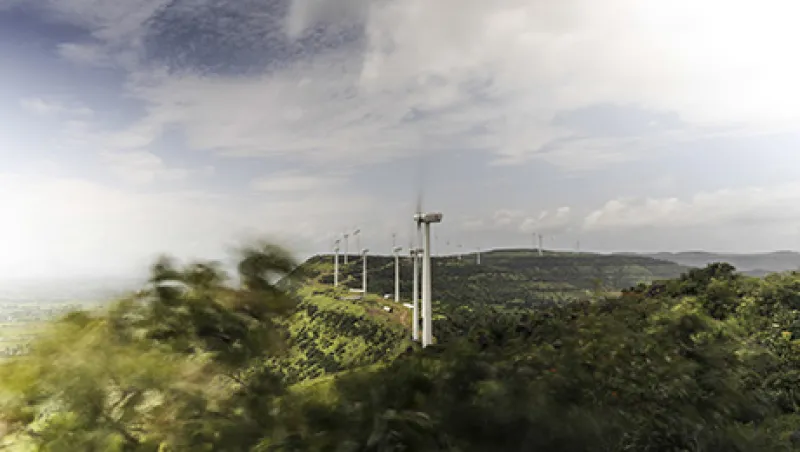Get ready for a bitterly ironic twist in the next chapter of renewable energy development. Just as power generation from sources like wind and solar may be hitting its stride thanks to more competitive pricing, policy and regulatory uncertainty in key markets could slow uptake through 2020.
That’s the verdict of the International Energy Agency’s new Renewable Energy Medium-Term Market Report 2014, which spreads the blame far and wide. Unanticipated cuts to renewable energy subsidies in Greece, Romania and Spain; open-ended reviews of such programs in places like France, Germany and the U.K.; and unanswered questions about the life span of U.S. tax incentives for renewables have all left investors skittish, the report notes.
In 2013 new investment in renewables hit $250 billion worldwide, and the total will be roughly the same this year, according to the Paris-based IEA. But after that, it will probably fall to an average of $230 billion annually until the end of the decade, the report warns. “The costs of renewable generation depend on the cost of capital, which is determined by risk perceptions,” it states. “Policy uncertainty is one risk that investors cannot well manage.”
As a result, renewable energy generation will stall, the IEA forecasts. On the back of swift growth during the previous few years, renewables accounted for almost 22 percent of global power output in 2013, but the agency calls for that proportion to edge up just a few points by 2020, to roughly 26 percent.
Not everyone shares this negative outlook. Seb Henbest, head of Europe, Middle East and Africa research at London-based Bloomberg New Energy Finance (BNEF), says his research firm’s medium-term modeling shows renewable energy investment climbing for the rest of the decade. Although a lack of policy clarity has slowed capital bound for renewables projects, Henbest wagers that the drought won’t last.
“We’ve started to see [policy uncertainty] unwind on a number of levels,” he tells Institutional Investor, pointing to investors’ growing comfort with retroactive incentive changes in Spain and progress on energy market reviews to determine government support for renewables in Britain, France and Germany. “We think 2014 is going to tick back to investment growth in Europe,” Henbest adds, explaining that because Europe is such a major renewables market, activity there in the coming years will play a crucial role in the global investment story.
Perhaps even more important, in Henbest’s view, falling prices will make renewable power increasingly competitive. Between the third quarter of 2009 and the middle of this year, the cost of electricity generated from thin-film photovoltaic solar cells dropped from $225 per megawatt-hour to $149. Last year the average cost of a solar module was just 78 cents per megawatt — versus $79.42 in 1976.
Cheaper renewables have the power to change the energy equation in ways that skeptics may overlook. For example, BNEF analysts argue that China’s 2020 goals for shale gas and nuclear energy generation are too ambitious; if that assessment turns out be correct, the cheapest options to fill the gap will include offshore wind power.
Sheeraz Haji, CEO of San Francisco–based research and advisory firm Cleantech Group, echoes Henbest’s cautious optimism. Encouraged by the trend toward lower prices, he thinks policy is bending in the right direction. Haji cites the Environmental Protection Agency’s June introduction of the Clean Power Plan, which will require U.S. power plants to push their carbon emissions 30 percent below 2005 levels by 2030. In recent years European regulators have shown a “deep commitment to clean energy,” even if the region’s policies show varying levels of support, he asserts.
For some renewables industry players, such ambiguity is less of a worry. Because hydroelectric power has never been a prime recipient of government incentives, it’s less vulnerable to public sector whims than other subsectors, contends Ted Rose, CEO of Gravity Renewables, a Boulder, Colorado–based investor-backed owner and operator of small hydro plants. Rose believes that the improving economics of hydro and other renewables will be all the support these power sources need to keep establishing themselves through 2020 and beyond.
The IEA report strikes an optimistic note by presenting an alternate outcome that sees governments “creating a stable investment climate with long-term policy certainty.” Such a scenario would “go a long way to reduce ... the cost of financing for renewable investments,” it says.
Although Cleantech Group’s Haji agrees, he says a little uncertainty could also be driving investment in U.S. solar energy. The solar investment tax credit (ITC), a 30 percent incentive for residential and commercial installations, is set to expire at the end of 2016. Observers predict that it will be extended but at a lower rate.
“In the U.S. the ITC cliff will be helpful to motivate the market,” Haji says. “In my opinion, the next two years will be amazing times for solar deployment.”
Get more on alternatives.






